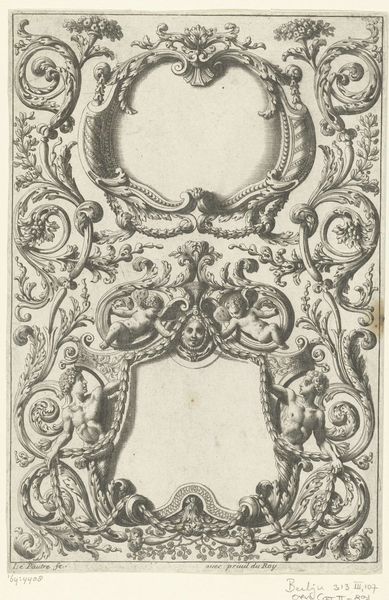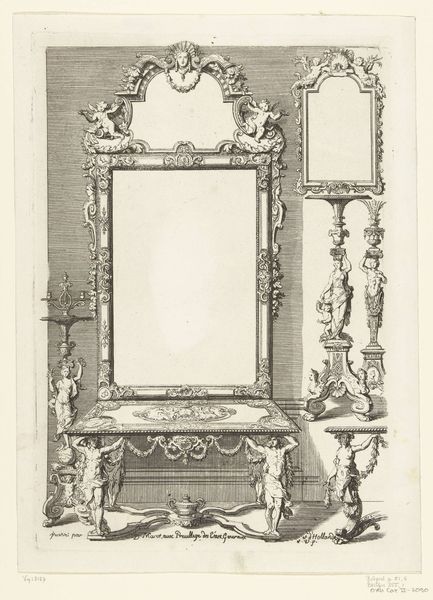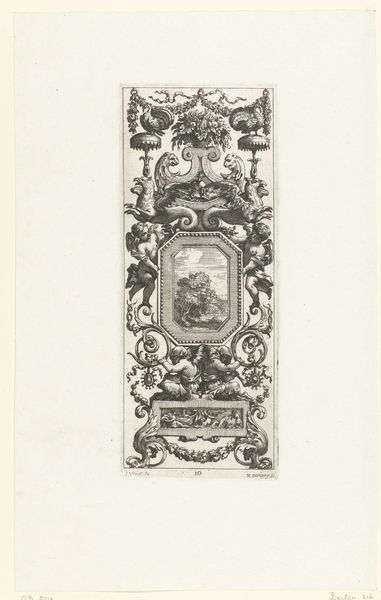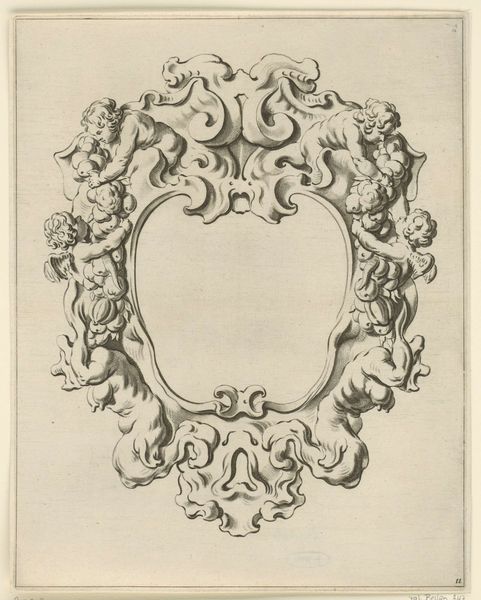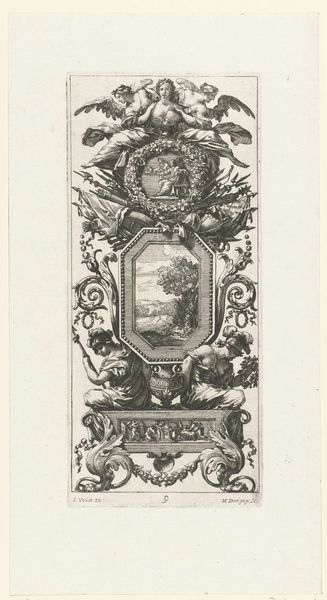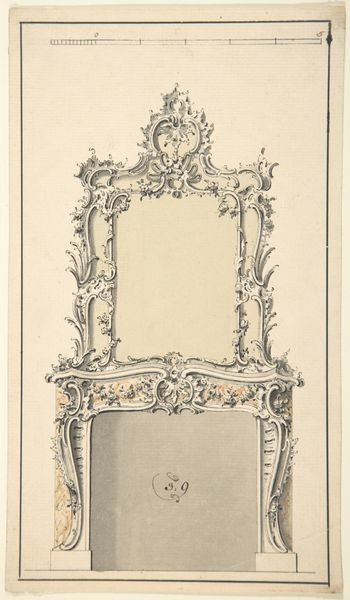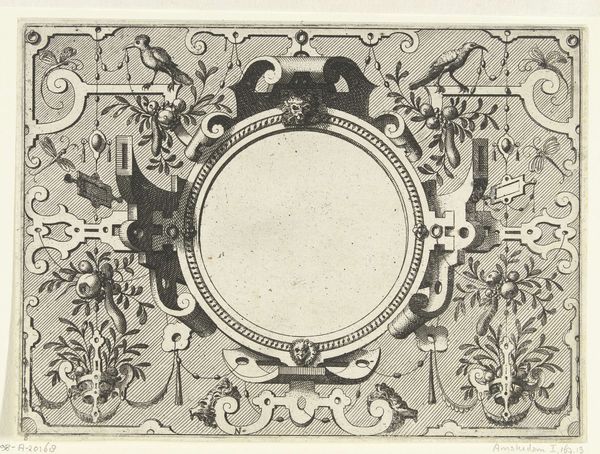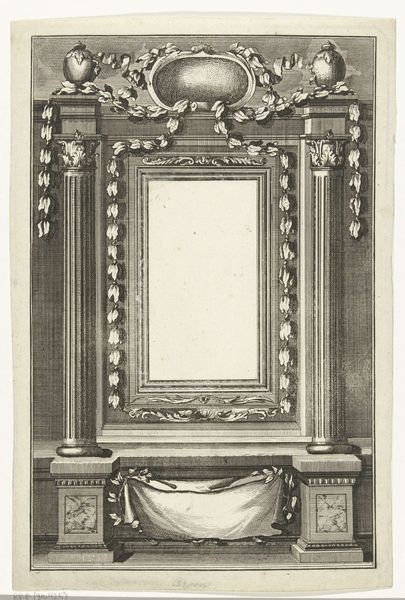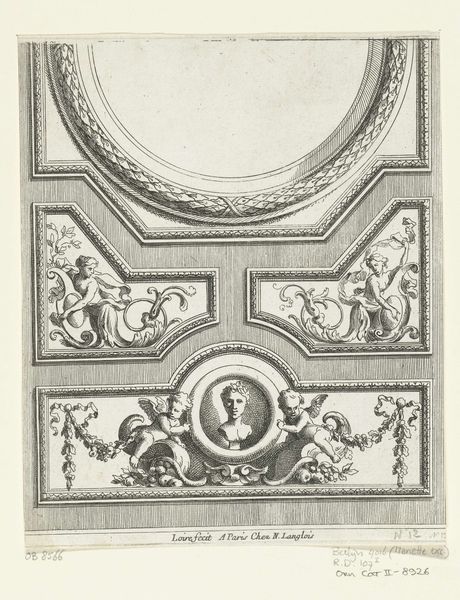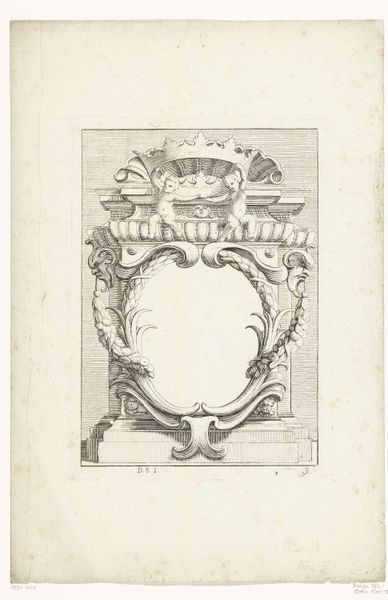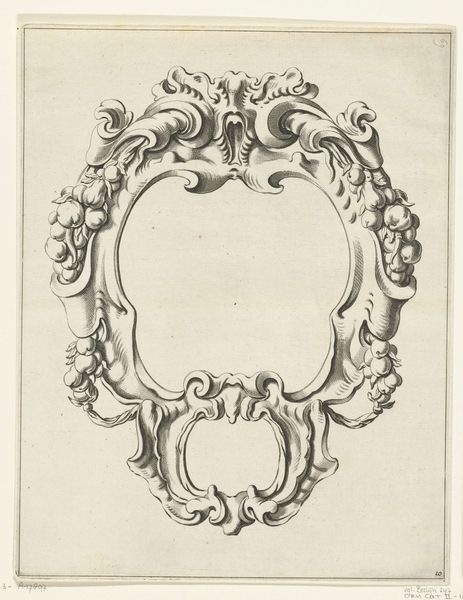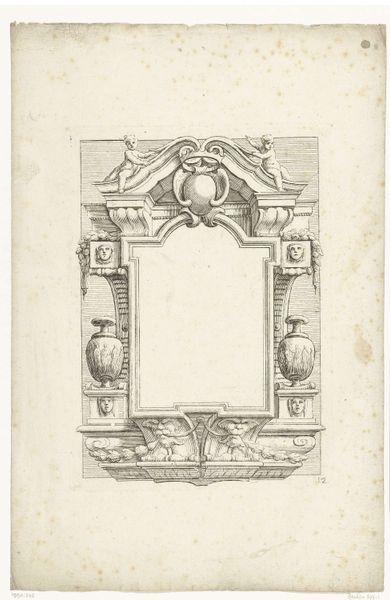
drawing, print, engraving
#
drawing
#
decorative element
#
baroque
# print
#
old engraving style
#
form
#
line
#
decorative-art
#
engraving
Dimensions: height 278 mm, width 194 mm
Copyright: Rijks Museum: Open Domain
Curator: Welcome. We’re standing before "Vier spiegellijsten," or "Four Mirror Frames," an engraving and print made around 1712 by Daniël Marot. What strikes you initially? Editor: Oh, wow! They feel intensely opulent—excessive in a wonderfully decorative way. It's like peering into the dressing room of a baroque deity. The level of ornamental detail, the shells, and the scrolls, even the human figures… It's pure sensory overload. Curator: Precisely. Note the organizational principle at play, the rhythmic variations between the rectangular and oval formats. Each frame embodies different articulations of the Baroque aesthetic. Also, consider the surface texture achieved by Marot with mere lines. It’s all artifice! Editor: It’s fascinating how the severe, controlled lines can create the impression of three-dimensional forms and evoke texture and depth. It also sparks thoughts about perception and representation—are these empty frames windows or barriers? And how do mirrors invite us to consider our own reflections and identities? Curator: A crucial insight. Mirrors, then and now, are fundamentally concerned with the interplay between appearance and reality. Here, however, the form overtakes function—Marot pushes beyond mere reflection, drawing the gaze towards structure. See how motifs such as acanthus leaves recur throughout. Editor: Yet each design tells a unique story. The crests and figures suggest the identity or aspirations of the imagined owners, while the varying arrangements of flora evoke both abundance and fleeting beauty. Each of them exudes unique aesthetic character. I love the implied narratives—who might have chosen which frame, and for what purpose? Curator: You intuit precisely the decorative intention—Marot's work served as a catalogue of fashionable designs that would have appealed directly to wealthy patrons. Editor: Thinking about what lies beyond the frames now… Thank you, I’m taking a long, longing look at that detail… the idea that the object itself becomes the focal point! I'm struck by how that speaks to shifting values even across eras. It seems strangely fitting for the selfie age we're now in! Curator: Indeed, it appears that both you and I find echoes of meaning layered within this fascinating creation.
Comments
No comments
Be the first to comment and join the conversation on the ultimate creative platform.
